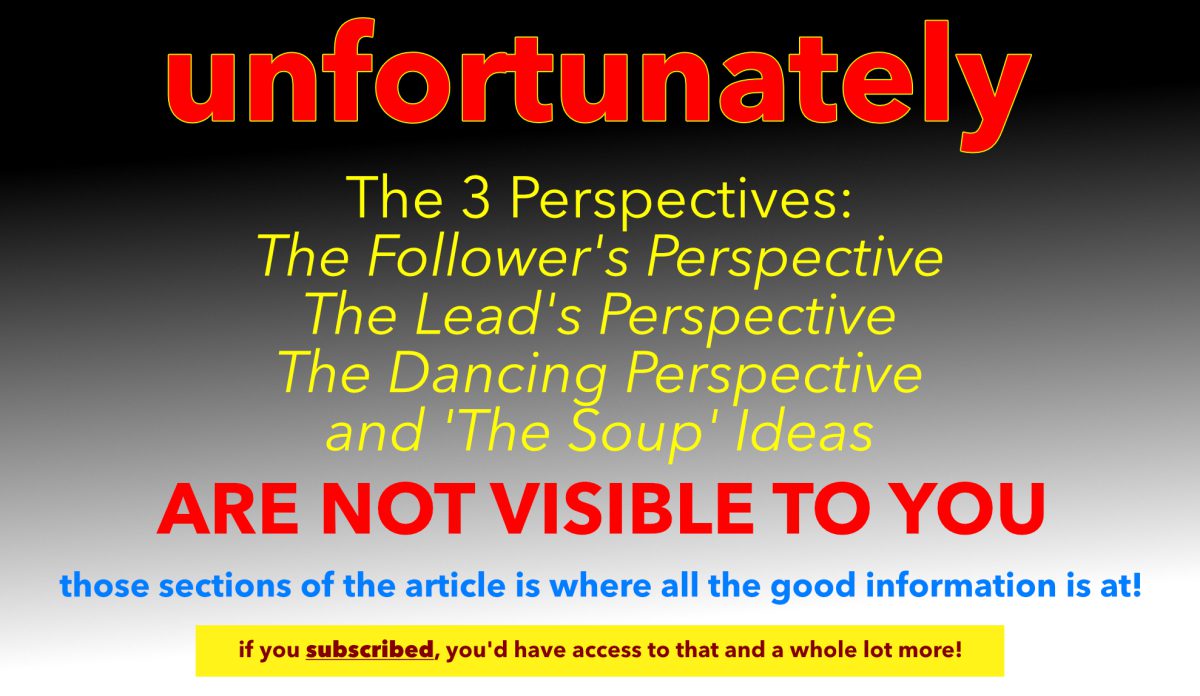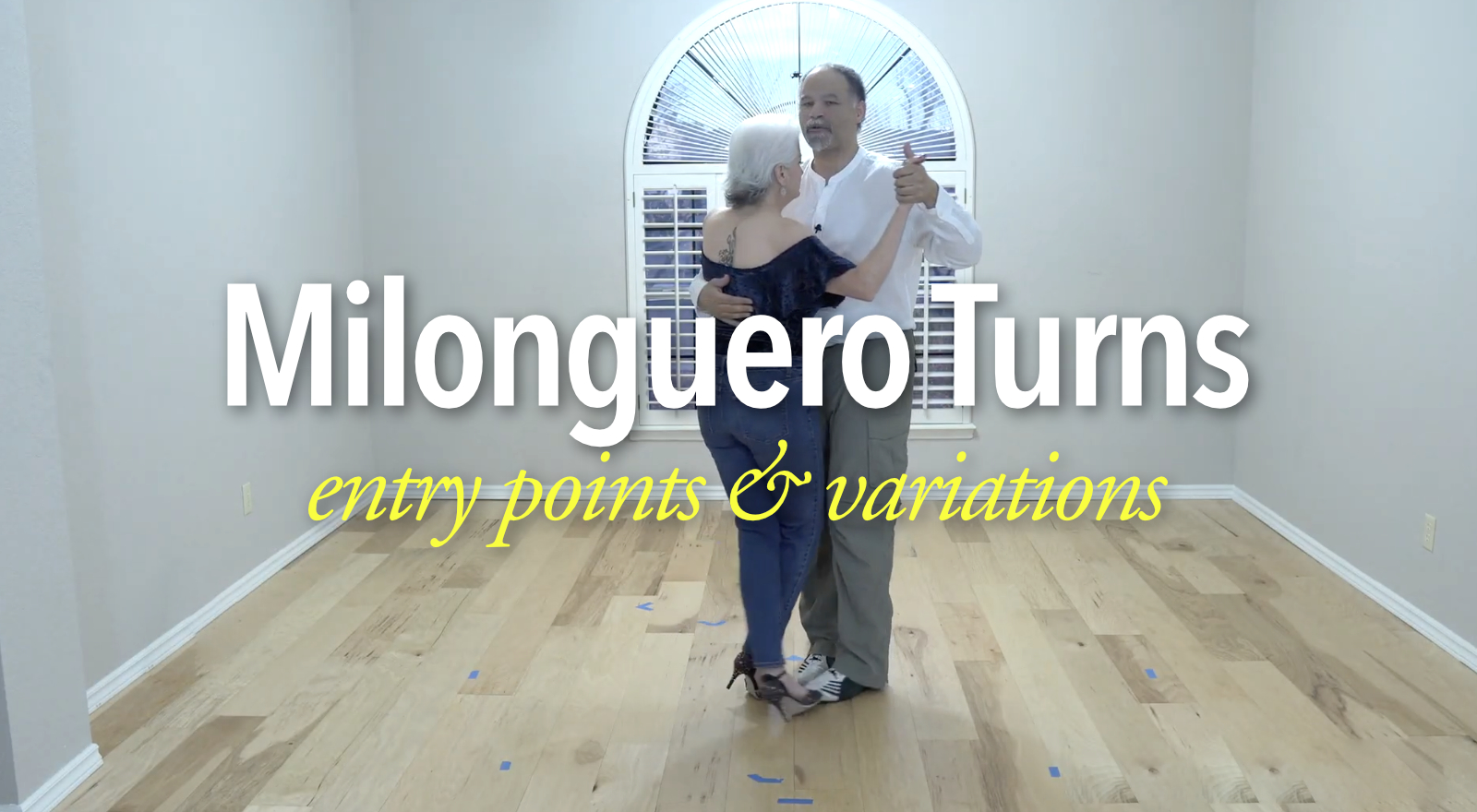Reader Note: I am now using an acronym for the following phrase which gets used a lot on tangotopics. In place of “Resistance, tension, force, pushing, pulling, squeezing, compressing the embrace” = We use > ReTeFoPuPuSqeCoEm!
First and foremost, if this is your first time seeing a ‘Milonguero Turn’, then stop reading right here and go look at the Milonguero Turn video. This video and article will NOT cover the technique behind the vocabulary. Further, if you do look at the video and think, that it’s a simple series of crosses. Think again. It’s not that simple. That said, then let’s dive right into the Milonguero Turn Entry Points and Variations.
Why are we talking about Entry Points and Variations for the Milonguero Turn (Type 2 Turn) ? Because for a lot of people the vocabulary exists in isolation. It doesn’t fit into their reality until you show them how and where it can work into their reality. Hence the entry points and variations on a theme.
In short the term ‘Milonguero Turn’ is a bit of a misnomer. The reason being that until about 40 years ago, this was the predominant turn in Argentine Tango. That is until Gustavo Naviera and Fabian Salas came along and changed everything by rediscovering the Follower’s Molinete to the Lead’s Giro, or what Tango Topics refers to as a Type 1 Turn.
This article is a companion to the (2024) Milonguero Turn video. It’s meant to show you the different entry points of how you can enter a Milonguero Turn but also how you can vary it so that it’s not the same ole same ole constantly.
The Common Entry Points.
There are 4 common entry points to the Milonguero Turn or pieces of vocabulary that you can use to set up the Milonguero Turn. Or that naturally lend itself to Milonguero Turn. While we won’t go into any detail as to the entry points because all of these things are in your library, we will briefly mention these things here.
Entry Point #1 > Lazy or Milonguero Ochos.
Entry Point #2 > Back Crosses/Double Back Crosses
Entry Point #3 > Linear Ocho Cortado
Entry Point #4 > Parallel or Cross System Rock Steps w/o Resolutions.
All of these entry points lend themselves to the Milonguero Turn itself, most especially #2 because you’re already set up to do them.
Variations on a Milonguero Turn.
Because the turn isn’t that complex, there aren’t that many variations of what you can actually do in terms of variations. The obvious variations here are starting with a forward vs back. OR a Side step to Forward or Back step. While, technically, there as many variations to Milonguero Turn as their are to the Molinete/Giro structure (6,724), that changes dramatically BECAUSE we’re no longer talking about steps, but rather crosses. Huh ? Take for example the following 27 common steps for the Follower’s Molinete:
… SUBSCRIBE at the BASIC or PREMIUM LEVEL TO SEE THE REST of THIS SECTION

The Wrap Up
The Entry Points and Variations are a valuable tool for you to have an awareness about as a Lead or as a Follower. Do you need this stuff to dance ? No. Does it create expansion and variation in your dance experience ? Certainly. Is that desirable ? Yes. It is. Very much so. So on the whole do you need it ? NO. Is it a ‘nice to have’ ? Yes. And that’s one reason why this video and document exists. We want to create as many options and opportunities as possible for both roles. Secondly it’s important that both roles, not just the Lead be aware of these things. Why ? Expectation. Frequently what happens is a bit of stumbling when something out of the ordinary is led. This stuff is out of the ordinary but not really because we’re using the same simple vocabulary over and over again. The sticking point is the transitions between the elements that makes things tricky. So to address that, we play with this stuff a lot just to get familiar with it and later on start to incorporate these items into our dance.

